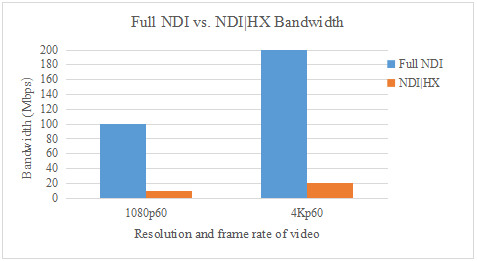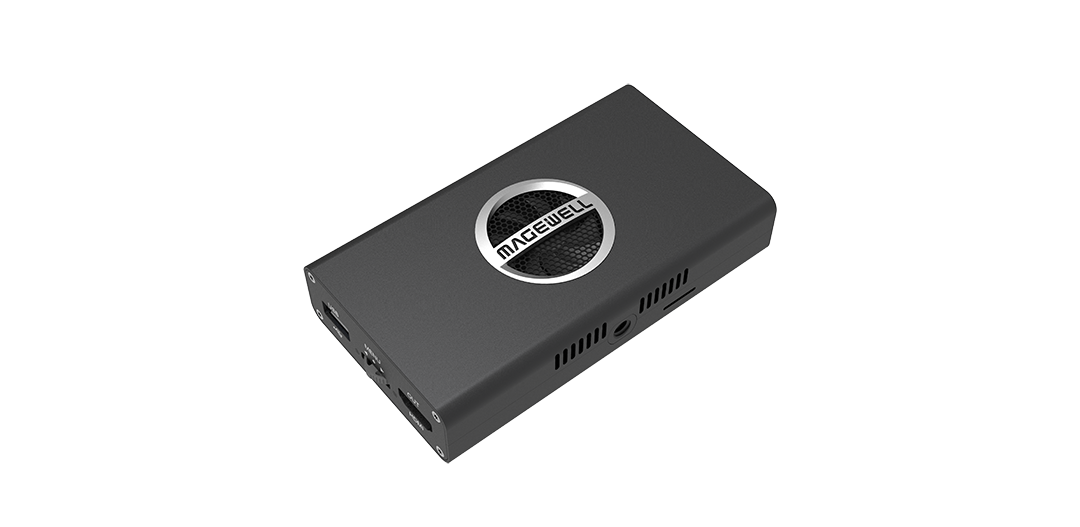Transmission Bandwidth of Full NDI and NDI|HX
NDI (Network Device Interface) is an IP network device interface protocol introduced by NewTek in 2015. It can transmit high-quality AV signals, metadata and control signals through LAN with ultra-low latency. Users can leverage their existing Gigabit network infrastructure to build AV-over-IP workflows which can reduce wiring and maintenance costs.
NewTek's NDI 4.X SDK released on 2019 IBC supports both Full NDI and NDI|HX. Full NDI's compression is nearly visually lossless, so IP streams of Full NDI have greater bandwidth requirements. Generally a channel of 1080p60 NDI stream occupies about 100Mbps of bandwidth, a channel of 4Kp60 video stream requires about 200Mbps. Users can transmit multi-stream HD NDI streams in a Gigabit network environment, but resolution, frame rate and picture complexity can all affect the bit rate of the encoded NDI streams. So the actual number of channels is determined by the actual available bandwidth of the user's switch. Full NDI is widely used in live production solutions.
With the same video source and transmission network environment, compared to Full NDI, the bandwidth required to use NDI|HX video streams compressed in H.264 format is reduced by about 90%, that is, a channel of 1080p60 video only requires about 10Mbps, a channel of 4Kp60 video only requires about 20Mbps, so video can be transmitted in a wireless environment of low-bandwidth. However, the delay caused by NDI|HX is higher than that of Full NDI (delay of HD Full NDI is less than 100ms, while that of NDI|HX is about 100ms ~ 200ms).

Magewell's two hardware decoders of the Pro Convert family support both Full NDI and NDI|HX (NDI 4.X) protocols, which can decode NDI|HX streams sent by NDI|HX cameras or devices integrated with the NDI 4.X SDK. (Note: Most of the NDI|HX cameras currently on the market, especially those NDI|HX cameras or encoders released before the IBC exhibition in September 2019 don't support this).

